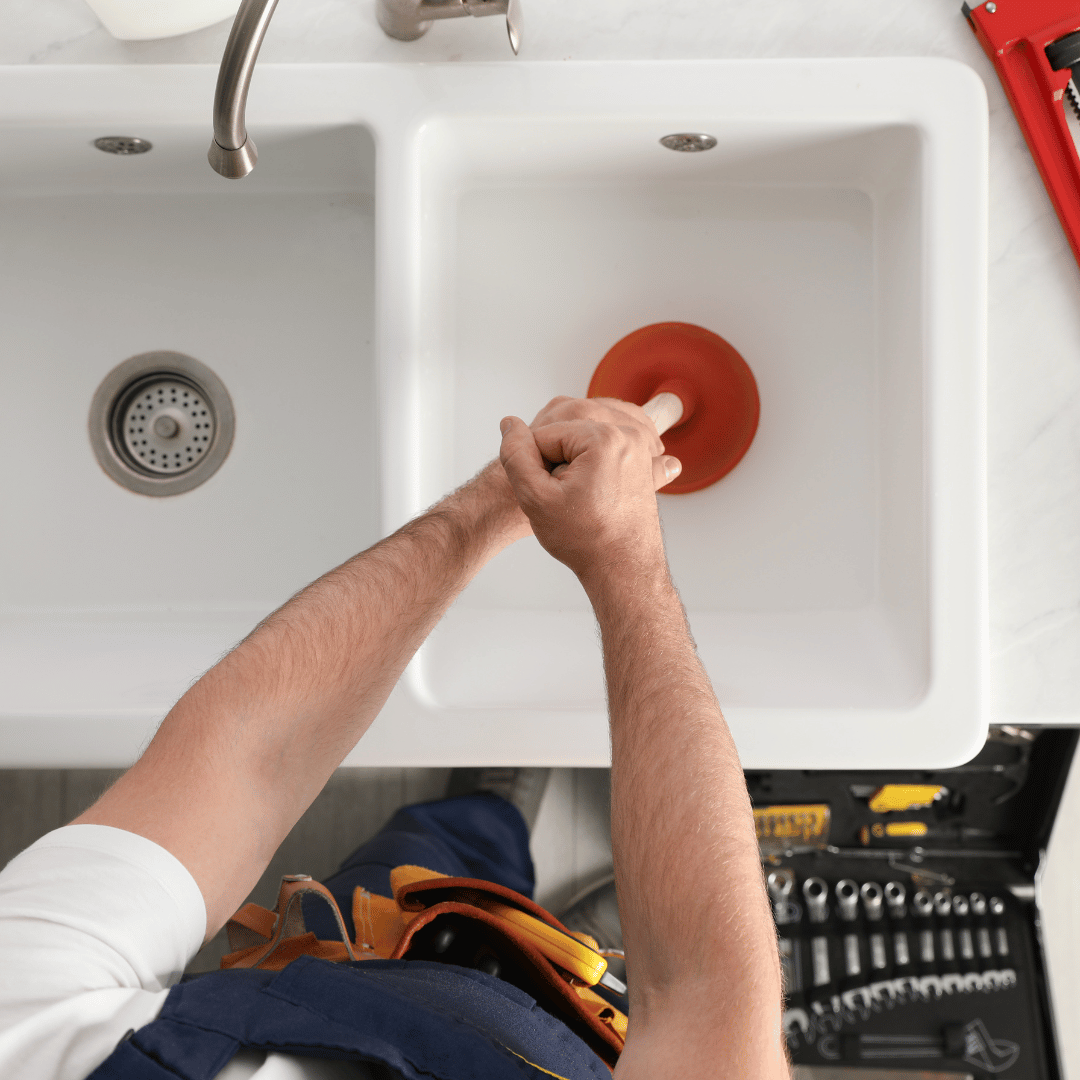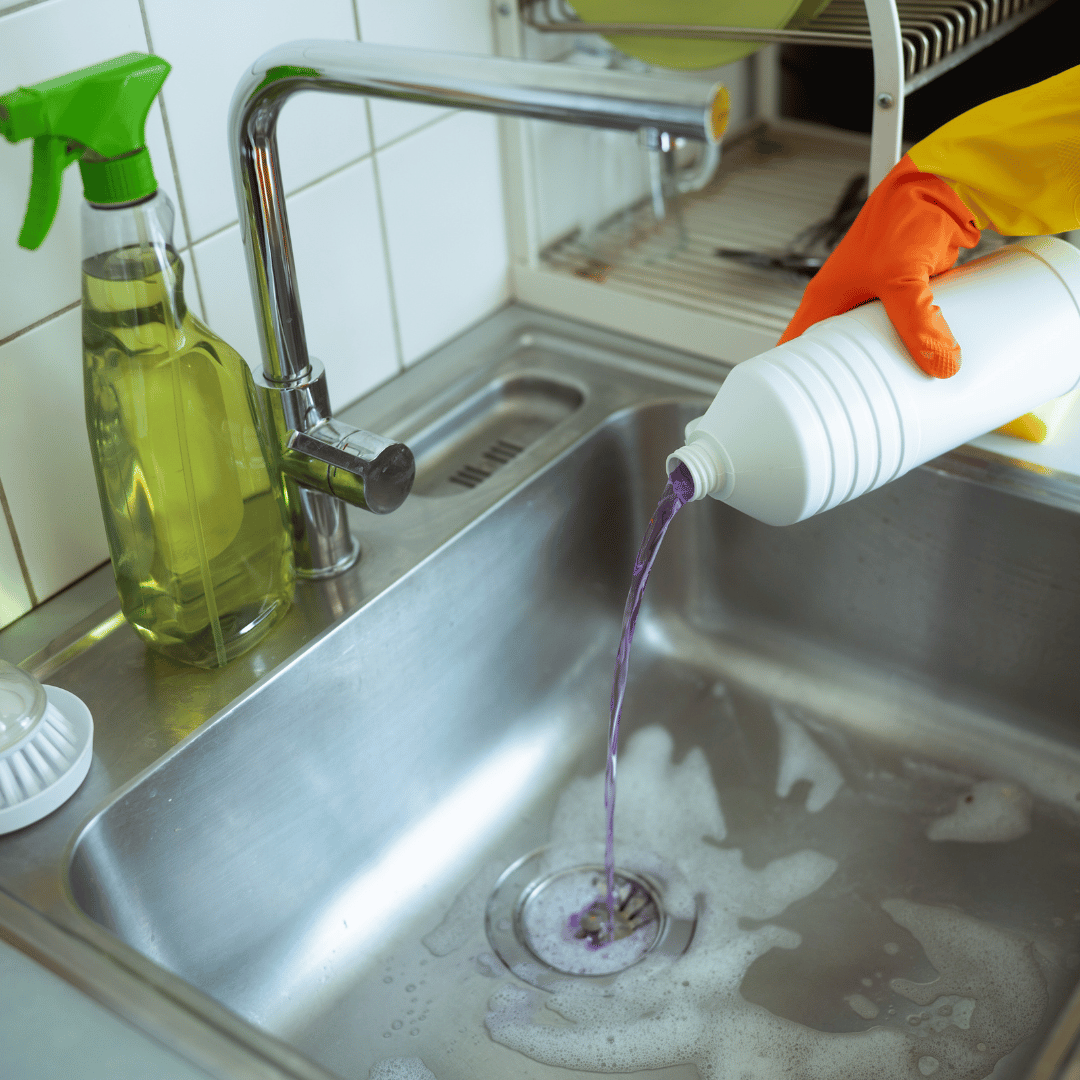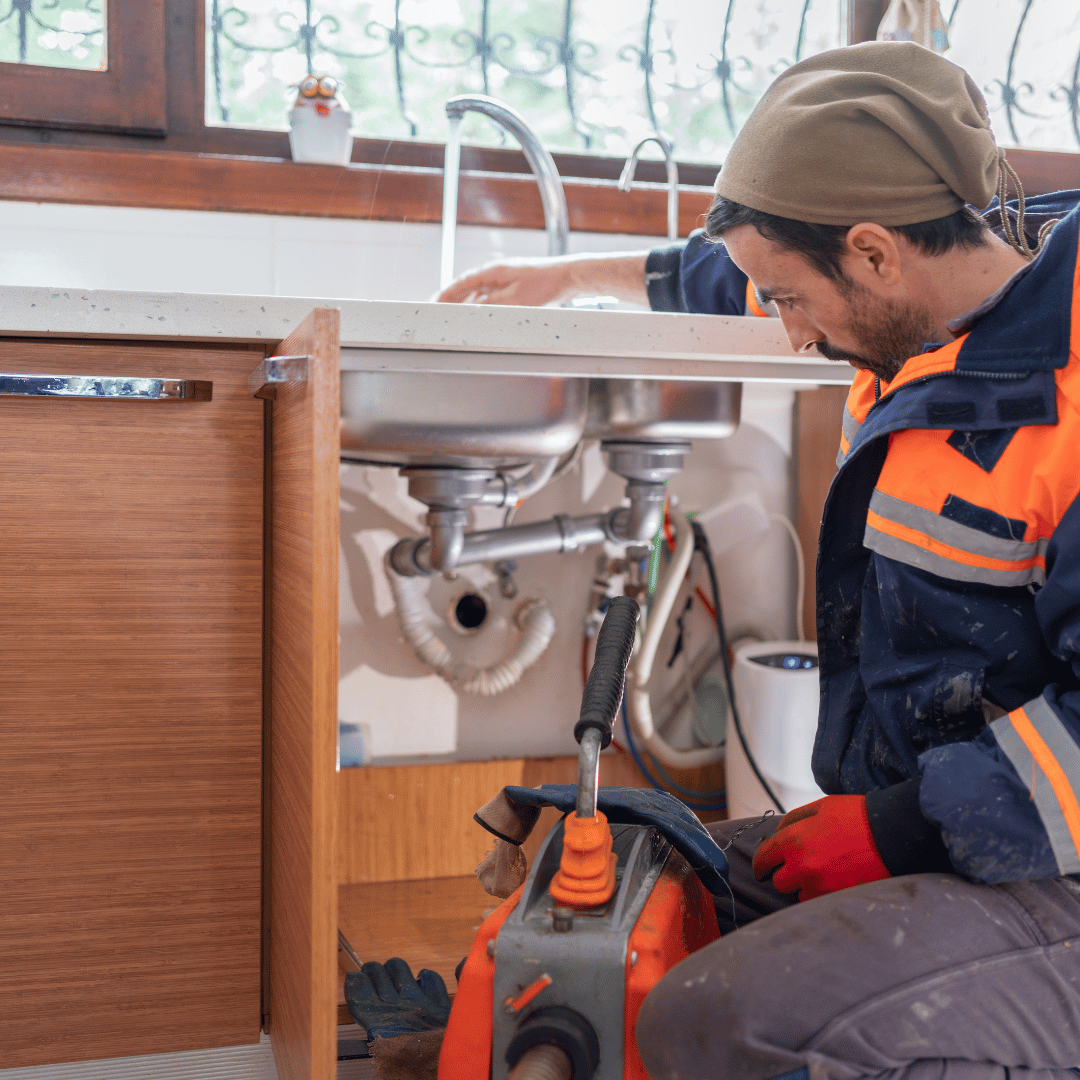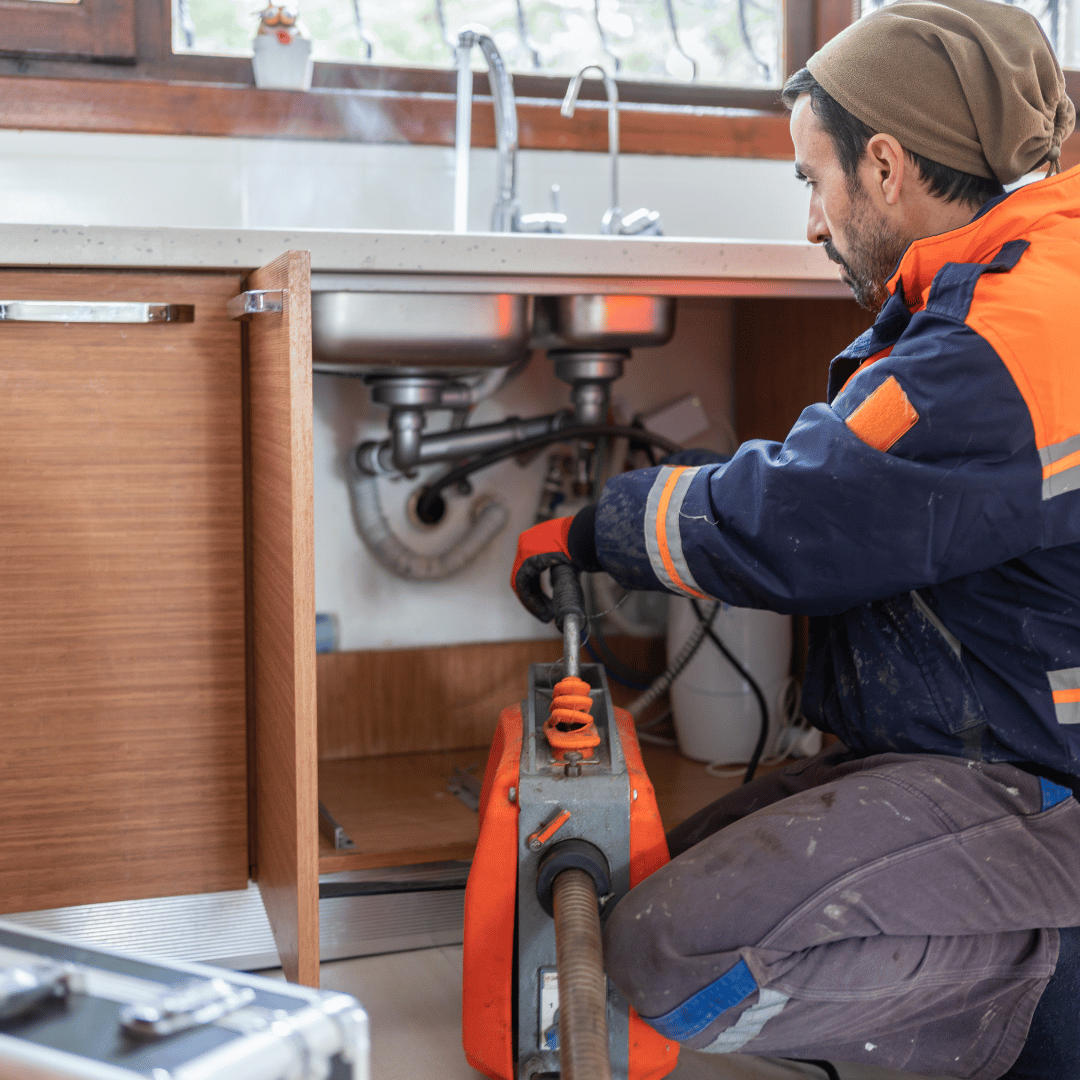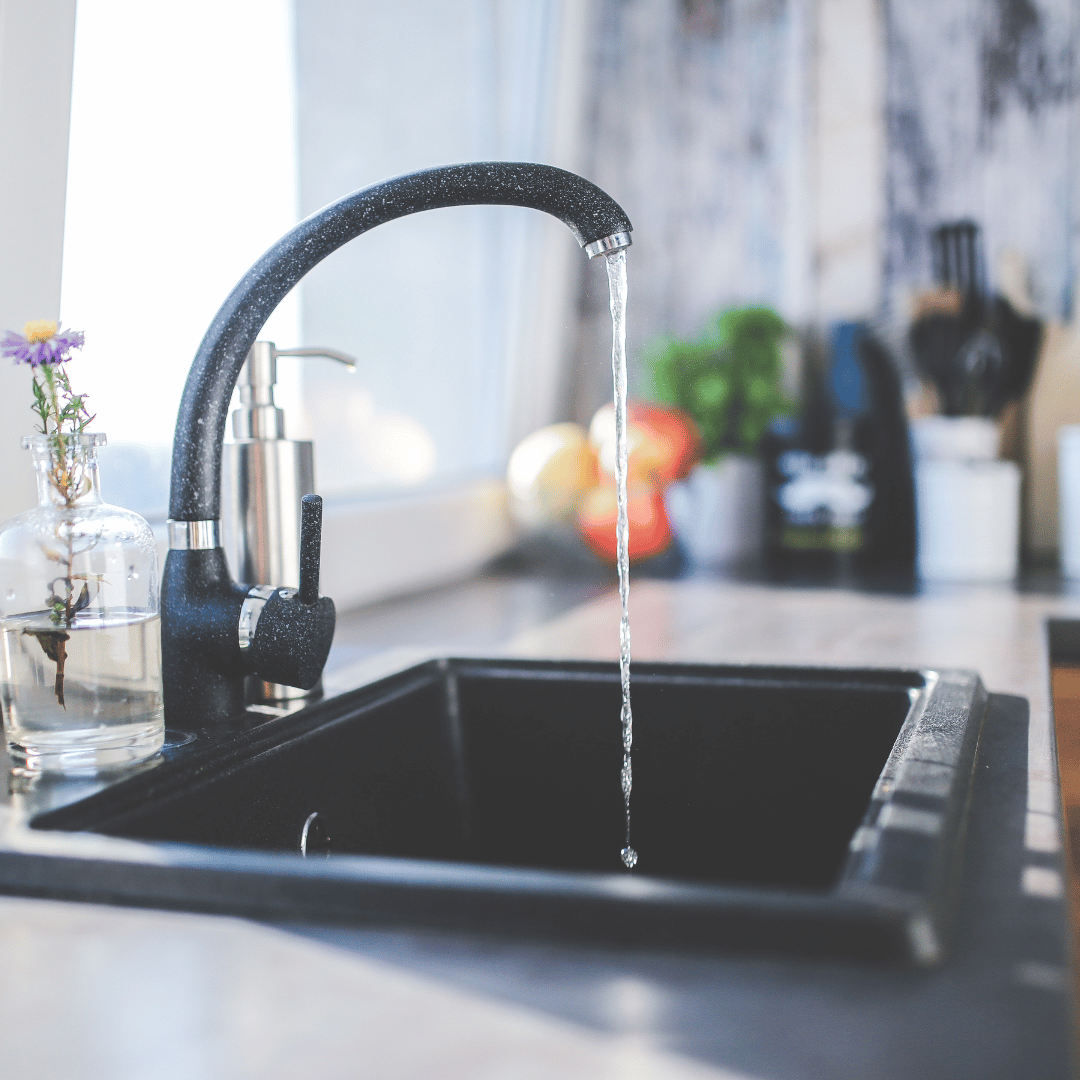A blocked drain outside can quickly become more than just a minor inconvenience—it can lead to unpleasant odors, water damage, and potential flooding around your property. Whether it’s caused by leaves and debris or tree roots infiltrating your pipes, dealing with a clogged outdoor drain is something every homeowner will likely face at some point.
At Larratt Bros Plumbing, we understand the frustration and urgency of a blocked drain. With over 30 years of experience in plumbing repairs, sewer inspections, and leak detection throughout the Bay Area, our expert team is here to help you troubleshoot and solve these common drainage problems. In this guide, we’ll walk you through practical steps to unblock your drain and share expert advice to prevent future issues from arising.
If you’re experiencing issues with your outdoor drain, don’t wait until the problem worsens—read on to learn how to resolve it and avoid further complications.
What Causes an Outside Drain to Become Blocked?
Understanding the causes of a blocked outside drain is the first step in addressing the problem. Various factors can contribute to blockages in outdoor drains, often leading to water backup, flooding, or foul odors. Some of the most common culprits include:
1. Leaves and Debris
One of the most frequent causes of blockages in outdoor drains is the accumulation of leaves, twigs, and other debris. During the fall, leaves can easily collect in your gutters or drains, clogging the flow of water. If not regularly cleaned, this debris can quickly build up and form a stubborn obstruction.
2. Tree Roots
Tree roots are another common cause of outdoor drain blockages. As trees grow, their roots naturally seek out moisture, and if your drains or sewer pipes are cracked or have gaps, the roots can infiltrate the system. Over time, the roots grow into the pipes, creating significant blockages that restrict or completely block water flow. These types of clogs often require professional sewer inspections and can lead to expensive repairs if not addressed promptly.
3. Grease and Fat Buildup
If your outdoor drains are connected to your kitchen or waste pipes, grease and fat buildup can be a major cause of clogs. When fats and oils are poured down the drain, they solidify and create sticky, stubborn blockages. This is often a problem for drains leading to septic tanks or sewers, requiring a bit more effort to clear.
4. Mud and Soil
After a heavy rain or storm, mud and soil from the surrounding area can wash into your outdoor drains. This sediment builds up over time, especially if your yard slopes towards the drain, creating a clog. Mud and soil often mix with organic matter, making the blockage even harder to remove.
5. Old or Damaged Pipes
Finally, old, cracked, or damaged pipes can be a hidden cause of blockages in outdoor drainage systems. Over time, pipes can deteriorate due to age, weather, or pressure from tree roots. These compromised pipes are more susceptible to blockages and may require professional plumbing repairs or full pipe replacement.
Understanding the causes behind a blocked outdoor drain can help you prevent future issues. Regular drain cleaning, timely leak detection, and periodic sewer inspections can help you identify potential problems before they become major concerns.
How Do You Unblock Your Outside Drain?
If you’ve noticed standing water or unpleasant odors around your outdoor drain, it’s time to take action. Fortunately, there are several methods you can use to clear a blocked outdoor drain on your own before calling in a professional. Here’s a step-by-step guide to help you unclog your drain effectively:
1. Use a Plunger
One of the simplest tools to clear a minor blockage is a plunger. While typically used for sinks or toilets, a plunger can also be effective for outdoor drains if the clog is close to the surface. Here’s how to use it:
- Make sure the plunger’s rubber end fully covers the drain.
- Push down and pull up firmly to create suction, loosening the debris in the drain.
- Repeat the process for several minutes, and check to see if the water starts draining properly.
2. Use a Drain Snake
For more stubborn blockages deeper within the drain, a drain snake (also known as an auger) can help. This tool is designed to reach further down the pipe and break up or dislodge debris.
- Insert the drain snake into the blocked drain and slowly turn it clockwise.
- As you turn, the snake will either break apart the clog or hook onto it, allowing you to pull it out.
- If you feel resistance, continue rotating the snake to dislodge the obstruction.
3. Flush with Boiling Water
If the blockage is caused by grease or soap buildup, boiling water can help break it down. This method works best for organic clogs. Here’s how to do it:
- Boil a kettle of water.
- Slowly pour the hot water down the drain in stages, allowing it to sit for a few seconds before adding more.
- Repeat the process two to three times, checking after each pour to see if the water drains more effectively.
4. Use a High-Pressure Hose
A high-pressure hose is another powerful method for clearing clogs, especially if the blockage is deeper in the pipes. The force of the water can push the obstruction through the pipe and clear the drain. Here’s how to use it:
- Attach a nozzle to the hose that creates a strong stream of water.
- Insert the hose into the drain and turn on the water at full pressure.
- Move the hose around in the drain to ensure the water reaches every part of the pipe, breaking up any blockage along the way.
5. Try an Enzyme-Based Drain Cleaner
If you’re dealing with organic matter like food, grease, or plant debris, enzyme-based cleaners can help break it down naturally. These cleaners are non-corrosive and safe for your pipes. Simply follow the instructions on the product to pour it down the drain and let it work overnight.
When to Call a Professional Plumber
If the blockage is deep in the drainage system, or if none of these methods resolve the issue, it may be time to call in a professional plumber. At Larratt Bros Plumbing, we specialize in sewer inspections, drain cleaning, and plumbing repairs, and we have the right tools and expertise to clear any tough clogs safely and effectively.
How Do You Clear a Clogged Outside Drain Pipe?
When dealing with a clogged outside drain pipe, the blockage may be located deeper in the system, requiring more advanced techniques. While surface-level blockages can often be cleared with simple tools like a plunger or drain snake, clogs that have built up further down the pipe might need more intensive solutions. Here’s a step-by-step guide to help you clear a clogged outside drain pipe effectively:
1. Remove Surface Debris
Before tackling the deeper clog, start by removing any visible debris from the surface. Leaves, sticks, dirt, and other loose materials can contribute to a blockage, so clearing them away will give you better access to the drain pipe. You can use a rake, gloves, or a scoop to remove this debris from around the drain area.
2. Flush with Boiling Water
Once the surface debris is cleared, boiling water can help break down organic clogs caused by grease, soap, or food waste. Boil a kettle of water and carefully pour it down the drain in small amounts, allowing the hot water to work through the system. For more persistent blockages, repeat the process a few times, checking after each flush to see if the water is draining more freely.
3. Use a Drain Snake (or Auger)
If the clog is deeper in the pipe, a drain snake (or auger) can help break up the blockage. A drain snake is a long, flexible tool designed to reach deep into pipes and dislodge debris that may be stuck in the drain line. Here’s how to use it:
- Insert the snake into the drain pipe, turning it slowly as you push it further down.
- Once you feel resistance, rotate the snake to help break up the clog or hook onto it.
- Pull the snake out, bringing the debris with it. If needed, repeat the process until the pipe is clear.
4. Try an Enzyme-Based Cleaner
If the clog is caused by organic material, such as food waste, grease, or tree roots, you can use an enzyme-based drain cleaner. These cleaners work by naturally breaking down the organic matter that is causing the obstruction. Pour the recommended amount of enzyme cleaner into the drain and allow it to sit overnight. The enzymes will slowly dissolve the clog, making it easier to clear.
5. High-Pressure Water Jetting
For more stubborn blockages that don’t respond to boiling water or manual methods, high-pressure water jetting is an excellent option. This method involves using a powerful stream of water to clear out the pipe, breaking up the clog and flushing the debris through the system. A professional plumber typically handles this technique, but it’s one of the most effective ways to clean out a clogged outside drain pipe without damaging the pipe.
6. Inspect for Tree Root Infiltration
If you suspect that tree roots have infiltrated your pipes and are causing the blockage, a professional sewer inspection may be necessary. Roots can penetrate the pipe joints and cause significant damage over time. Professional plumbers can use video inspection tools to check for root intrusion and other issues. If roots are the problem, a special rooter service may be needed to remove them.
7. Call a Professional Plumber
If none of these methods resolve the issue, or if the blockage is in a particularly hard-to-reach part of the pipe, it’s time to call in a professional plumber. At Larratt Bros Plumbing, we specialize in everything from plumbing repairs to drain cleaning and sewer inspections. We have the expertise and equipment to quickly and safely clear even the toughest outdoor drain clogs, ensuring your drainage system works like new.
Who Is Responsible for a Blocked Outside Drain?
When an outdoor drain becomes clogged, one of the first questions homeowners have is: who is responsible for fixing it? The answer depends on the location of the blockage and the type of drainage system in place. In general, responsibility can fall on the homeowner or the local municipality, depending on where the problem lies. Here’s a breakdown to help you understand who may be accountable for a blocked outside drain:
1. Homeowner Responsibility for Private Drains
As a homeowner, you are typically responsible for maintaining and repairing the drains that are located within the boundaries of your property. This includes drains connected to your garden, driveway, or private sewer line. If the blockage is caused by leaves, debris, tree roots, or clogs in your pipes, you will need to take care of the issue, either by using DIY methods or calling a professional plumber for assistance.
Homeowners are also responsible for any issues caused by damage to their private drainage system, such as cracked or broken pipes. In many cases, regular plumbing repairs and drain cleaning can prevent these types of blockages from occurring in the first place.
2. Municipal Responsibility for Public Drains
If your outdoor drain connects to a public sewer system, the municipality is typically responsible for maintaining and clearing blockages in the public portion of the drainage system. For example, if the blockage occurs in the sewer line that is shared by multiple properties or if the drainage system extends beyond your property line, the local government or utility company is responsible for resolving the issue.
In some cases, a homeowner may be liable for part of the drainage repair costs if the blockage is caused by something on their property that has affected the public system, like tree roots or debris. It’s essential to know where your property ends and where the public system begins. You can usually find this information on your property survey or by consulting the local utility company.
3. Shared Responsibility
In some situations, your drain may be part of a shared drainage system. This is common in older neighborhoods or areas with shared stormwater management systems. If a blockage occurs in a shared drain, it may be necessary to coordinate with neighboring property owners to resolve the issue. Homeowners in shared systems are often jointly responsible for maintenance and repairs, and costs may be divided among the parties involved.
4. Insurance and Drainage Responsibility
It’s also important to check with your homeowner’s insurance provider to see if your policy covers issues related to blocked drains or sewer backups. In most cases, flood damage and sewer backups caused by drainage issues are covered under specific policies. However, regular drain maintenance may not be, so it’s important to understand the terms of your coverage.
If a blockage is causing damage to your home, such as flooding in the basement or water pooling around your property, make sure to contact your insurance company and a professional plumber as soon as possible.
5. Professional Help with Responsibility Issues
If you’re unsure about the cause of the blockage or who is responsible, it’s always a good idea to call a professional plumber for a sewer inspection. A licensed plumber can assess the situation and help determine where the blockage is located and who is responsible for fixing it. If needed, they can also assist in dealing with local municipalities or neighbors in shared responsibility situations.
At Larratt Bros Plumbing, we offer comprehensive plumbing services, from drain cleaning to water heater repair & installation. Our team is ready to help you identify and resolve drainage issues on your property, whether they’re small clogs or complex sewer line problems.
Can I Unblock My Own Drain?
When faced with a blocked outdoor drain, one of the first questions many homeowners ask is whether they can resolve the issue themselves. While some blockages are simple enough to handle with DIY methods, others may require the expertise of a professional plumber. Here’s a breakdown of when you can attempt to unblock your own drain and when you should call in an expert.
1. DIY Drain Unblocking: When It’s Safe to Do It Yourself
Many blockages in outdoor drains are caused by common issues like leaves, twigs, and debris, which can often be cleared with basic tools. Here are some situations where DIY methods are typically sufficient:
- Surface-Level Blockages: If the blockage is near the drain opening and caused by debris like leaves, dirt, or small objects, you can usually clear it with a plunger or by manually removing the debris. Using a garden rake or gloves, you can scoop out the material, ensuring water can flow freely again.
- Minor Grease or Soap Build-Up: For clogs caused by grease or soap residue, boiling water or a mixture of baking soda and vinegar can often clear the obstruction. These natural solutions can break down organic buildup without harming your pipes.
- Tree Roots in Shallow Pipes: If you suspect that small tree roots have infiltrated your pipes but the issue is near the surface, a drain snake or auger can help dislodge the roots and restore water flow. These tools are available at most hardware stores and can be used safely by homeowners.
2. When to Call a Professional Plumber
While many blockages can be cleared with DIY methods, certain situations require professional intervention. Here’s when you should call a plumber:
- Deep or Persistent Blockages: If the blockage is deeper in your pipes, particularly if it’s caused by tree roots or an accumulation of debris further down the line, professional equipment like a high-pressure water jet or video inspection tools may be needed to properly clear the pipe. These tools can reach deeper into the system and ensure that the entire blockage is removed.
- Damage to the Pipe: If you suspect that your outdoor drain pipe is cracked, broken, or deteriorating due to age, using DIY methods may not resolve the issue. Damaged pipes require professional plumbing repairs or replacement to prevent future blockages and more serious problems, like leaks or flooding.
- Severe Drainage Issues: If you experience frequent blockages or water backing up in multiple drains, the problem may not be isolated to a single outdoor drain. It could indicate a more extensive issue with your sewer system or mainline. A licensed plumber can perform a thorough sewer inspection to identify the cause of recurring clogs and fix the issue at its source.
- Flooding or Water Damage: If a blocked drain is causing significant flooding or pooling water around your property, it’s important to call a professional immediately. A blocked drain can lead to water damage, especially if it’s affecting your foundation, yard, or basement. Professional help can prevent long-term damage and ensure the blockage is cleared safely.
3. Benefits of Professional Drain Unblocking
While DIY methods can be effective for minor clogs, professional plumbers offer several advantages:
- Expert Knowledge and Tools: Professional plumbers have specialized tools and experience to handle tough blockages, such as high-pressure water jetting, video pipe inspections, and rooter services.
- Long-Term Solutions: If your blockage is a symptom of a larger issue (like tree root infiltration or a damaged pipe), a plumber can provide long-term solutions that prevent future blockages and ensure the integrity of your drainage system.
- Safety and Efficiency: Working with drains and sewer systems can be messy and potentially hazardous. Plumbers follow strict safety protocols and can address the problem quickly, preventing further damage to your property.
4. Professional Plumbing Services
At Larratt Bros Plumbing, we have over 30 years of experience in providing plumbing repairs, drain cleaning, and sewer inspections. Whether you’re dealing with a minor clog or a major drainage issue, our team has the expertise and tools to resolve the problem efficiently and effectively. Don’t hesitate to reach out if you need assistance with any of your plumbing or sewer issues.
What Can I Pour Down My Drain to Unblock It?
When you’re dealing with a blocked outdoor drain, many homeowners look for quick solutions that they can do themselves. One common approach is to pour something down the drain to help dissolve or clear the blockage. While some store-bought drain cleaners can be effective, there are also natural alternatives that you can try to break up the clog safely. Here’s a rundown of what you can pour down your drain to help unblock it.
1. Boiling Water
One of the simplest and most effective solutions is boiling water. This method works well for organic clogs, such as grease, soap scum, or small food particles. Boiling water helps break down the buildup and allows it to flow through the pipes more easily. Here’s how to use it:
- Boil a kettle of water.
- Slowly pour the boiling water down the drain in stages, allowing it to sit for a few seconds before adding more.
- Repeat this process two to three times to see if the blockage clears up.
Tip: Be cautious when using boiling water, especially with plastic pipes, as it can cause damage over time. It’s best used for minor clogs caused by organic materials.
2. Baking Soda and Vinegar
A baking soda and vinegar mixture is a popular natural remedy for clogged drains. This combination creates a chemical reaction that can help break down clogs caused by grease, soap, or organic matter. Here’s how to use it:
- Pour about 1/2 cup of baking soda down the drain.
- Follow it with 1/2 cup of vinegar.
- Cover the drain with a plug or cloth to keep the reaction contained and let it sit for 15-30 minutes.
- After the reaction, flush the drain with boiling water to clear any remaining debris.
This method is eco-friendly and works well for minor clogs. It’s a great option for those who want to avoid using harsh chemicals in their plumbing system.
3. Commercial Drain Cleaners
If boiling water or baking soda and vinegar don’t do the trick, you may consider using a commercial drain cleaner. These products are formulated to dissolve grease, soap scum, and other organic materials that can cause blockages. However, be cautious with their use:
- Always follow the instructions on the label.
- Avoid using drain cleaners too frequently, as they can damage pipes, especially older ones, due to the harsh chemicals.
- Commercial drain cleaners are often effective for minor to moderate clogs but may not work on deep or stubborn blockages, such as those caused by tree roots or damaged pipes.
Tip: Always wear gloves and eye protection when using chemical drain cleaners, and ensure the area is well-ventilated.
4. Enzyme-Based Drain Cleaners
For a more gentle, eco-friendly option, enzyme-based drain cleaners are a great alternative to traditional chemical cleaners. These cleaners use natural enzymes and bacteria to break down organic materials like food, grease, and hair. They’re non-corrosive and safe for your pipes, making them an excellent option for regular maintenance.
To use an enzyme cleaner:
- Follow the instructions on the product.
- Pour the recommended amount of enzyme cleaner into the drain.
- Allow it to sit overnight so the enzymes have time to work on breaking down the clog.
Enzyme cleaners are effective for organic clogs but may take longer to work compared to harsher chemicals.
5. Salt and Baking Soda
A mixture of salt and baking soda can also help break down clogs in a drain. The salt acts as an abrasive, while the baking soda reacts with water to create a natural cleaning solution. Here’s how to use it:
- Mix 1/2 cup of salt and 1/2 cup of baking soda.
- Pour the mixture down the drain and let it sit for 30 minutes to an hour.
- Follow with hot water to flush out the debris.
This method is particularly useful for breaking down greasy clogs and food waste.
6. Avoid Harmful Substances
While it might be tempting to try substances like bleach, ammonia, or other harsh chemicals to clear your drain, these should be avoided. Not only can they damage your pipes, but they can also pose a health hazard if mixed with other substances, such as commercial drain cleaners. Additionally, these chemicals are harmful to the environment.
When to Call a Professional
If pouring these substances down the drain doesn’t resolve the issue, or if you’re dealing with a serious blockage such as tree roots or a damaged pipe, it’s time to call a professional plumber. At Larratt Bros Plumbing, we offer comprehensive services for clearing blocked drains, including drain cleaning, sewer inspections, and high-pressure water jetting to handle even the toughest blockages.
What Plumbers Recommend for Unclogging Drains?
When it comes to dealing with a blocked outside drain, professional plumbers have the expertise and tools to quickly identify the cause and provide long-term solutions. While DIY methods can work for minor clogs, plumbers often recommend specific techniques and equipment to ensure a complete and lasting fix. Here’s what experts like Larratt Bros Plumbing suggest for unclogging drains effectively:
1. Regular Maintenance and Inspection
Preventing blockages before they become a major issue is always the best approach. Professional plumbers recommend regular drain maintenance to keep your pipes clear and functioning properly. This includes:
- Annual inspections: Plumbers can conduct a thorough inspection of your outdoor drainage system and sewer lines to catch any early signs of blockages, damage, or tree root infiltration.
- Drain cleaning services: Professional drain cleaning using specialized tools, such as hydro jetting, helps clear out stubborn build-up of grease, soap, tree roots, and other debris.
Regular maintenance helps avoid the need for emergency plumbing repairs and can extend the life of your drainage system.
2. High-Pressure Water Jetting
For more serious or persistent clogs, high-pressure water jetting is one of the most effective methods used by plumbers. This technique involves using a powerful stream of water to blast away debris, tree roots, and other obstructions from inside your pipes. It is especially effective for:
- Clearing grease and food debris from kitchen drains.
- Breaking through tree roots that have infiltrated underground pipes.
- Cleaning out sediment and mineral build-up in pipes to restore smooth water flow.
Hydro jetting is a safe, non-invasive method that doesn’t damage pipes, unlike traditional mechanical methods.
3. Video Camera Inspections
When a blockage is deep within your outdoor drain, it can be difficult to pinpoint the exact location of the clog. Plumbers recommend video camera inspections to accurately locate the obstruction without unnecessary digging or guesswork. A small camera is inserted into the pipe, allowing plumbers to view real-time footage of the inside of the drain. This technology helps identify:
- Tree root intrusion that’s causing a blockage.
- Cracks or leaks in pipes that could be contributing to the issue.
- Sediment build-up or other types of debris stuck deep in the pipe.
By using this advanced tool, plumbers can determine the best course of action to fix the problem without causing damage to your property.
4. Enzyme-Based Cleaners for Regular Maintenance
For homeowners who prefer a more natural approach, plumbers often recommend enzyme-based cleaners for routine drain maintenance. These cleaners contain bacteria or enzymes that break down organic matter (such as grease, food, and hair) without the harsh chemicals found in traditional drain cleaners. While they may not solve severe blockages, they are ideal for preventing build-up and keeping your drains running smoothly between professional cleanings.
Enzyme-based cleaners are particularly useful for:
- Maintaining kitchen drains that are prone to grease buildup.
- Unclogging bathroom drains that may be blocked by hair and soap scum.
- Preventing future blockages in both indoor and outdoor drains.
5. Avoid Using Harsh Chemical Drain Cleaners
While it might be tempting to use chemical drain cleaners for a quick fix, plumbers generally advise against using them regularly. These harsh chemicals can:
- Damage your pipes, especially older pipes, due to their corrosive nature.
- Harm the environment and contribute to water pollution.
- Fail to address deeper issues, such as tree root infiltration or significant pipe damage.
Instead, professional plumbers recommend using safer, more effective methods like high-pressure water jetting or enzyme-based cleaners for better long-term results.
6. Clearing Clogs in the Sewer Line
If your outdoor drain is part of a larger sewer line, plumbers may need to address a blockage deeper within the system. Sewer backups can occur when there is an obstruction in the mainline, affecting multiple drains on the property. A professional plumber will use tools like a drain snake or hydro jetter to clear the blockage and ensure the entire system is working properly. They may also recommend a sewer line inspection if they suspect that there may be larger issues, such as pipe deterioration or root intrusion.
7. Tree Root Prevention
One of the most common causes of blocked outdoor drains is tree root infiltration. Over time, roots can grow into pipes through cracks or joints, causing severe blockages. Plumbers may recommend a few preventive measures to minimize the risk:
- Root barriers: Installed around your pipes, these barriers can help prevent roots from invading the system.
- Regular root treatments: Specialized chemicals or rooter services can clear roots from the pipes and prevent them from growing back.
If tree roots are causing recurrent blockages, it’s essential to address the issue promptly to avoid expensive pipe repairs.
8. Professional Repair or Replacement
If your drain is repeatedly getting blocked due to damage or aging pipes, it might be time for professional repairs or even a pipe replacement. Plumbers can inspect your system and determine if it’s more cost-effective to repair the existing pipes or replace them entirely. In some cases, replacing damaged pipes can save you money in the long run by preventing future issues.
When to Call a Professional for a Blocked Outside Drain
While there are several DIY methods to clear a blocked outdoor drain, certain situations call for the expertise of a professional plumber. Knowing when to call a pro can save you time, effort, and potentially prevent further damage to your plumbing system. Here are the scenarios in which you should reach out to a professional plumber for assistance:
1. Persistent or Recurrent Blockages
If you find that your outdoor drain is frequently clogged despite your best efforts to clear it, it may be a sign of a more significant issue. A recurring blockage could indicate:
- Tree roots infiltrating your pipes.
- Pipe damage causing debris to collect in one area.
- Sewer line problems or poor drainage design.
A professional plumber can use advanced tools like hydro jetting or video camera inspections to identify and address the root cause of the issue. Without addressing the underlying problem, the blockages will continue to occur.
2. Water is Backing Up in Multiple Drains
If the issue extends beyond a single drain and you’re noticing water backing up in multiple drains—such as your sinks, bathtubs, or even the toilets—it could indicate a sewer line blockage. A blockage in the main sewer line can affect all the plumbing in your home, leading to potential flooding and damage.
Plumbers have the expertise to assess whether the blockage is in the main sewer line and can use specialized equipment to clear the obstruction. They may also recommend a sewer inspection to ensure that your pipes are intact and functioning properly.
3. If You Suspect Pipe Damage
A blockage caused by damaged pipes—whether cracked, broken, or collapsed—requires professional repair or replacement. If you’ve tried DIY methods and the blockage persists, it’s a clear sign that the pipes themselves may be compromised. Issues like tree roots, shifting ground, or corrosion can cause pipes to deteriorate over time.
Plumbers can conduct a video inspection to examine the condition of your pipes and determine the best course of action, which may include repairs or complete pipe replacement.
4. Severe Flooding or Water Damage
If a blocked outdoor drain causes significant flooding or water pooling around your property, it’s important to act fast. Water damage can quickly spread, leading to costly repairs, mold growth, and foundation issues. If your drain blockage is causing flooding around your yard or basement, it’s time to call a plumber.
Plumbers can clear the blockage quickly, minimize water damage, and identify any additional drainage issues that might be contributing to the flooding. In some cases, they may recommend installing a sump pump or other flood prevention measures to protect your home in the future.
5. If You’re Dealing with a Deep or Complex Blockage
Sometimes blockages are simply too deep or complicated for DIY methods to handle. For example, if the clog is caused by tree roots, hard-to-reach debris, or a sediment build-up deep within your pipes, professional tools are necessary to clear the drain effectively. Common tools plumbers use include:
- Hydro jetting: High-pressure water is used to clear even the most stubborn clogs, including tree roots.
- Rooter services: Specially designed tools help remove invasive roots from pipes.
- Drain snakes or augers: Plumbers use these tools to break up deep blockages without damaging your pipes.
If you’re unable to clear the blockage using basic tools or methods, a professional plumber has the expertise to tackle the problem with the right equipment.
6. When You’re Unsure About the Cause of the Blockage
If you’re unsure about the cause of your blocked outdoor drain—whether it’s a tree root, a pipe leak, or a clogged sewer line—a plumber can assess the situation and give you a clear diagnosis. Trying to clear a blockage without understanding the cause can lead to further damage or waste your time on ineffective solutions.
7. If You Lack the Necessary Tools or Experience
Some drain blockages, particularly in outdoor systems, require specialized equipment and experience. If you don’t have access to a drain snake, hydro jetting equipment, or other professional-grade tools, or if you’re not confident in your plumbing skills, it’s best to call in a professional. Using improper techniques or tools can cause damage to your pipes, leading to more expensive repairs down the line.
8. Preventing Long-Term Issues
One of the main reasons to call a professional plumber is to prevent future blockages and other plumbing issues. A plumber can conduct a full inspection of your drainage system to identify any weak spots or areas that could cause trouble down the road. By addressing potential issues early, you can save money and avoid the hassle of dealing with frequent clogs.
Don’t Let a Blocked Drain Disrupt Your Day – Call the Experts!
Dealing with a blocked outside drain can be a frustrating and sometimes messy problem, but with the right knowledge and tools, most blockages can be cleared. Whether you choose to tackle the issue yourself using methods like boiling water, baking soda and vinegar, or you opt for professional help, it’s important to address blockages promptly to prevent more significant damage. If the clog persists or the problem seems more complex, don’t hesitate to call in a professional plumber.
At Larratt Bros Plumbing, we have over 30 years of experience helping Bay Area homeowners with all their plumbing needs. From drain cleaning and sewer inspections to leak detection and plumbing repairs, our team is here to ensure that your drains are clear and your plumbing system is running smoothly.
Call Us Today for Fast, Reliable Drain Services!
If you’re dealing with a blocked outdoor drain or any other plumbing issue, don’t wait! Call Larratt Bros Plumbing today at (650)873-5794 for expert service or schedule an appointment online. Let us help you get your plumbing back in top shape!


